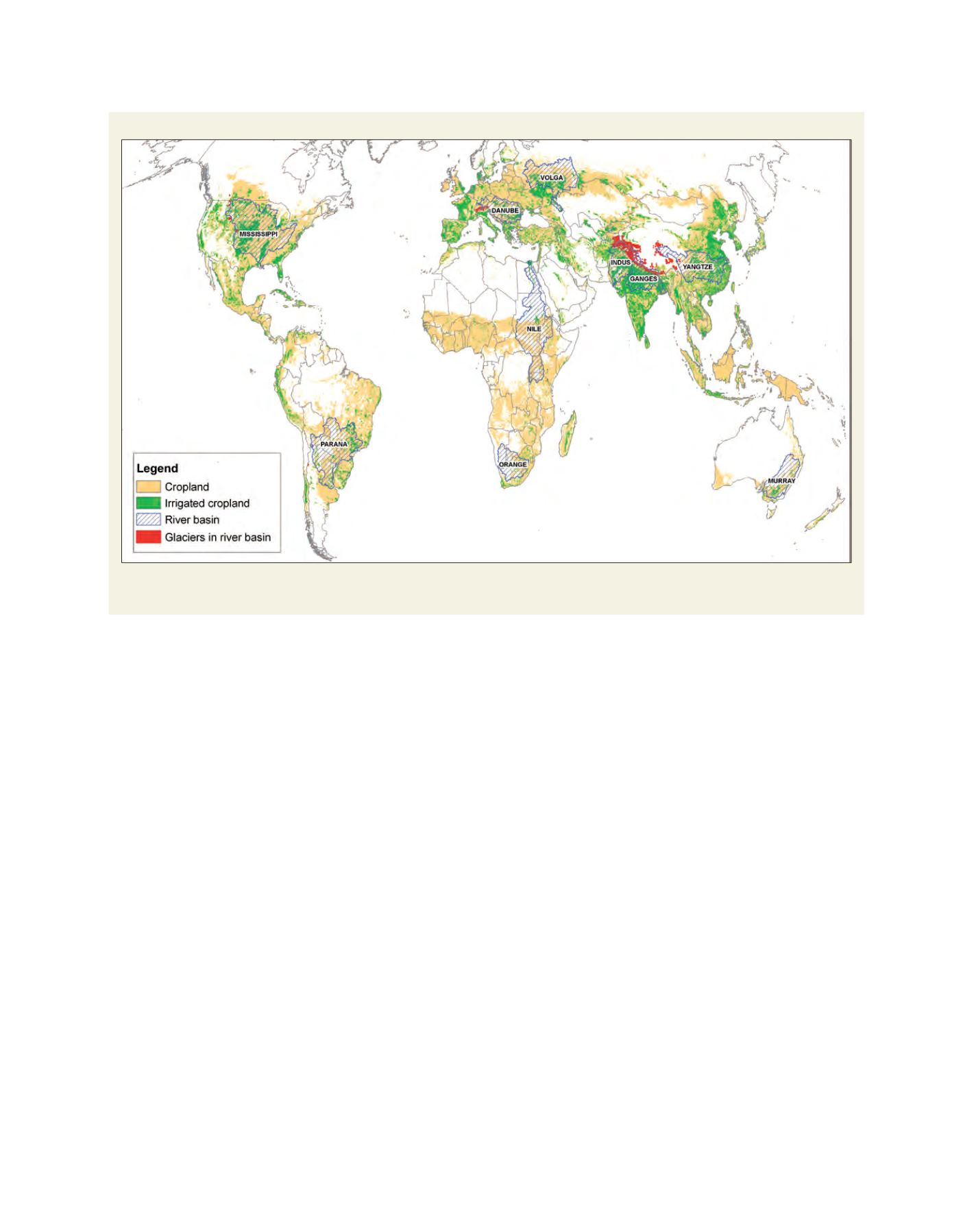

[
] 40
T
he
I
mpacTs
and
I
mplIcaTIons
of
c
lImaTe
c
hange
and
V
arIabIlITy
changing the nature of incoming solar radiation. Increased
concentrations of aerosol particles increase the proportion
of diffuse solar radiation, which enhances photosynthesis
in comparison with direct sunlight. It is suggested
19
that
this has increased vegetation productivity in Europe, North
America, Africa, India and China by up to 30gCm
-2
y
-1
.
Impact of climate change on other components of
the food system
Food distribution and other post-production aspects of
the food system depend largely on a functioning socio-
economic system, with transportation, storage and
purchasing of food all being key components of the
process between production and consumption. Climate
change is expected to affect the price of food – for
example, cereal crop prices are expected to increase
with high levels of global warming due to reductions in
productivity, although it is less clear whether lower levels
of global warming will increase or decrease prices. Many
components of the food system, such as transport and
infrastructure, are likely to be more vulnerable to changes
in extremes rather than shifts in the mean climate. River
and coastal flooding and extreme wind events cause
damage to infrastructure, affecting transport and sale of
food. Although extreme weather events can directly cost
lives through the immediate impacts, such as drowning
or serious physical injury, wider humanitarian impacts
flooding events, or be threatened by declining low flows in drought
affected regions.
Further indirect effects on production arise from other biological
and ecological impacts. A substantial proportion of potential crop yield
is lost due to weeds, pests and pathogens. Averaged over the major
world crops, losses have been estimated as 34 per cent fromweeds and
18 and 16 per cent from animal pests and pathogens, respectively.
14
The distribution of many pests, diseases and disease vectors is closely
linked with climate, particularly temperature. Changes in climate and
pest and disease management practices will likely lead to challenges
in managing agricultural contaminants (pesticides, veterinary medi-
cines) to avoid negative human health impacts.
15
Drivers of climate change through alterations in atmospheric
composition can also influence food production directly, particu-
larly by impacts on plant physiology. Increasing concentration of
carbon dioxide (CO
2
) in the atmosphere will enhance the productiv-
ity of all major food crops except those using the C4 photosynthetic
pathway (for example, maize, millet, sorghum and sugar cane).
Many hundreds of crop experiments suggest that a doubling of CO
2
from current levels would lead to increases in yield of approximately
one third, on average – although recent studies in field conditions
indicate that this may be an overestimate.
16
Physiological damage to crops by increased ground-level concentra-
tions of ozone (O
3
) is also a risk. O
3
concentrations are projected to rise
significantly as a consequence of anthropogenic pollution,
17
and reduced
yields of key crops have resulted when grown under higher O
3
concen-
trations.
18
Atmospheric pollution may also impact plant productivity by
The importance of distant water sources for crop production
Areas of cropland and irrigation, with selected major river basins and mountain glacier regions supplying water from distant sources. Future crop production
may be influenced by changes in climate both in the immediate vicinity and in other regions, in some cases up to thousands of kilometres away
Source: Met Office, British Crown Copyright
















